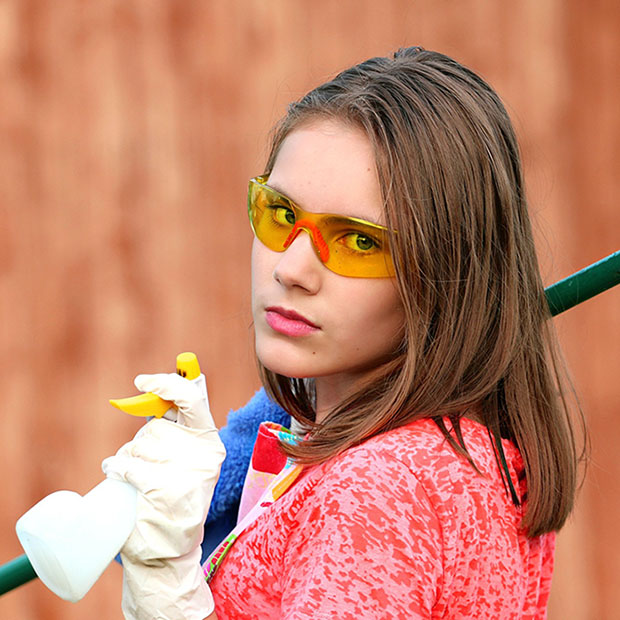Smart Tips for an Eye-Safe Home

44% of all eye injuries happen in the home.
The good news is that up to 90% of eye injuries are preventable if we take simple precautionary measures like wearing protective gear when working with chemicals or power tools and minimizing the unnecessary hazards around the home.
Identifying the Home’s Main Eye Safety Risks
An accident can transform the most innocent of objects can turn into a serious eye hazard — everything from the corners of furniture to pens and pencils. Something as simple as getting too close to a skillet with hot oil can put our eyes in danger. However, the most hazardous household items for the unwary eye are toys with small pieces and cleaning chemicals.
Outside in the yard, we should be wary of additional hazards like certain gardening and work tools and the debris flying out of the lawnmower. Chemicals like fertilizers, herbicides, and pesticides that we use to keep our lawns looking nice can also be dangerous. How can we protect our eyes from all of this?
How to Make Your Home Eye-Safe
- Protective eyewear is key. Any time you’re working with chemicals or other materials (like sawdust, wood chips, or shavings) that could spray up towards the eyes, wear safety goggles or glasses.
- Minimize your trip hazards. Keep things tidy, secure rugs, and make sure any stairways are equipped with good lighting and sturdy railings.
- Clear the lawn before mowing. Anything lying on the lawn can become a projectile when mowing or weed-eating, so clean up first!
- Follow warning labels. When using cleaning chemicals, make sure you’re using them properly. Check very carefully before using any of them together, and wash your hands after using them.
- Store any cleaners or tools safely, where kids and pets can’t reach them.
- Do not touch your eyes (any time, but especially while using cleaners)!
Be Ready With a First Aid and Emergency Plan
Another component to minimizing the risk of injury is planning ahead so that you’re ready if an accident or emergency happens. The most common eye injury type is when a foreign object or substance gets in the eye or when a foreign body penetrates the eye. For the latter, seek immediate medical attention and don’t try to touch the eye or remove the object. Use a rigid shield (such as a paper cup taped in place) to protect it on the way to the emergency room.
If someone gets a foreign object in their eye, a hospital trip might still be a good idea, and you should still avoid touching the eye because it might be worse than it looks. In some cases, foreign objects can be flushed out with water. If a chemical splashes in the eye, flush it with water for 20 minutes to wash as much of it out as possible and minimize harmful effects.
Bring Us Your Safety Questions!
If you’d like more safety advice for your home or your workplace or if you’d like to share your eye injury emergency plan with us to make sure it’s a good one, we’re here to help! These safety measures are particularly important for households with young children or people whose mobility is limited.